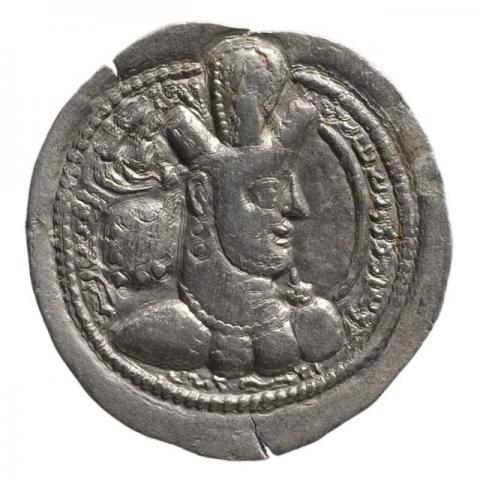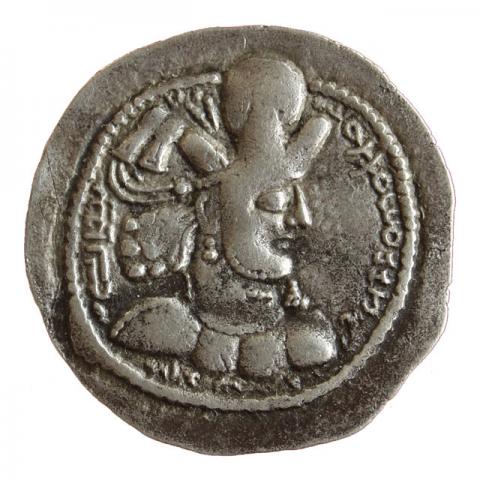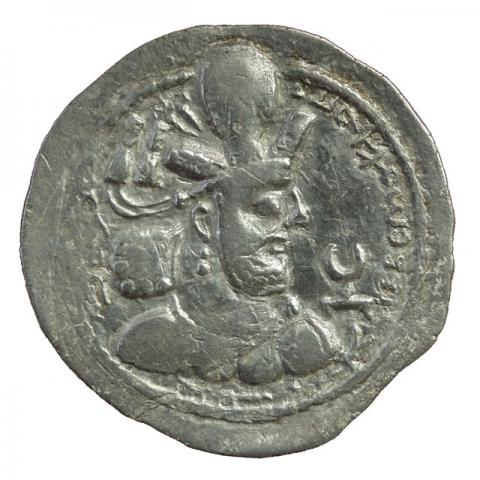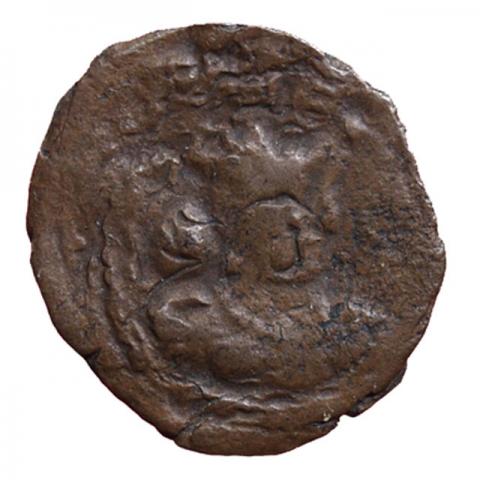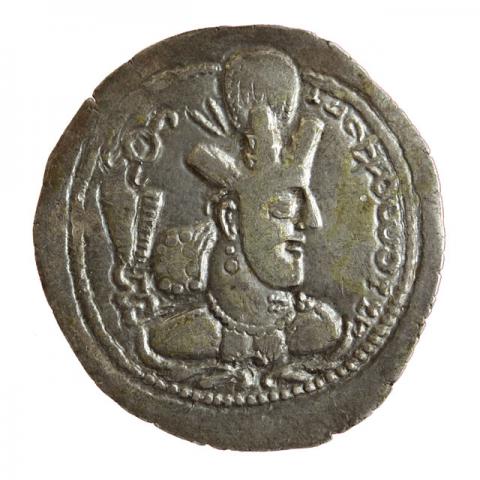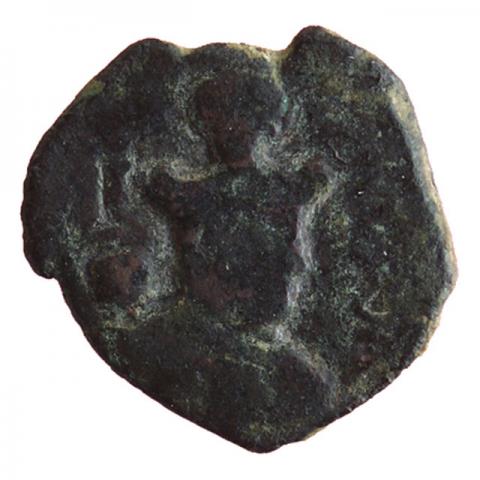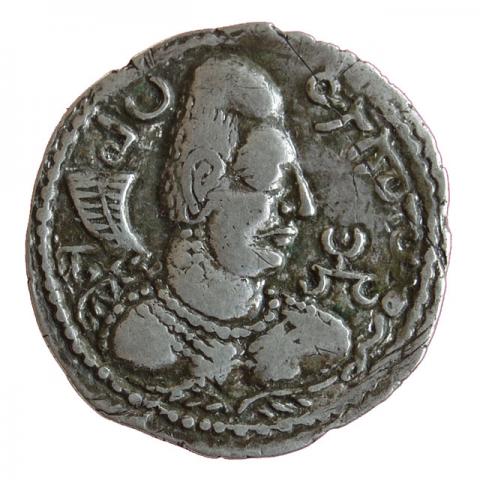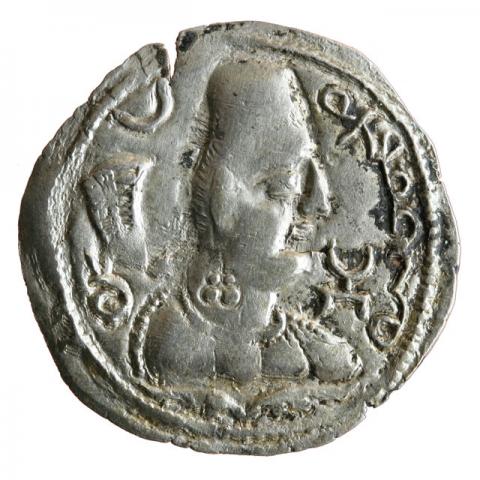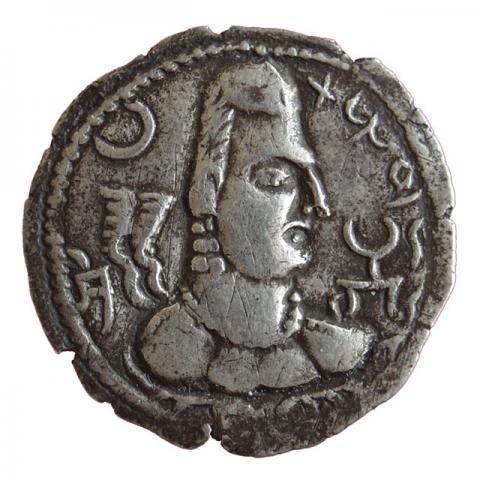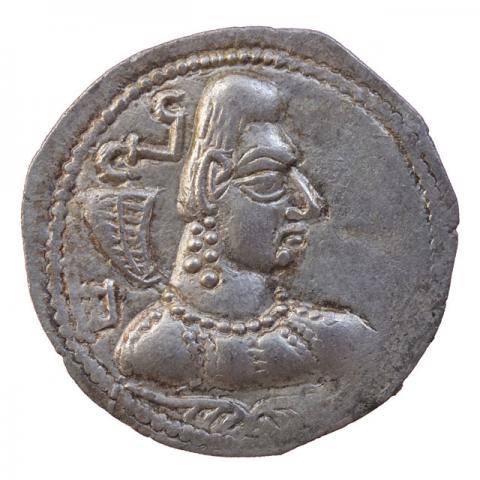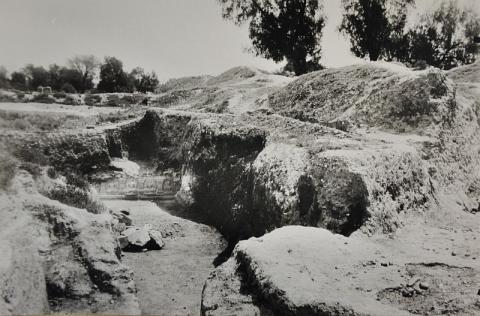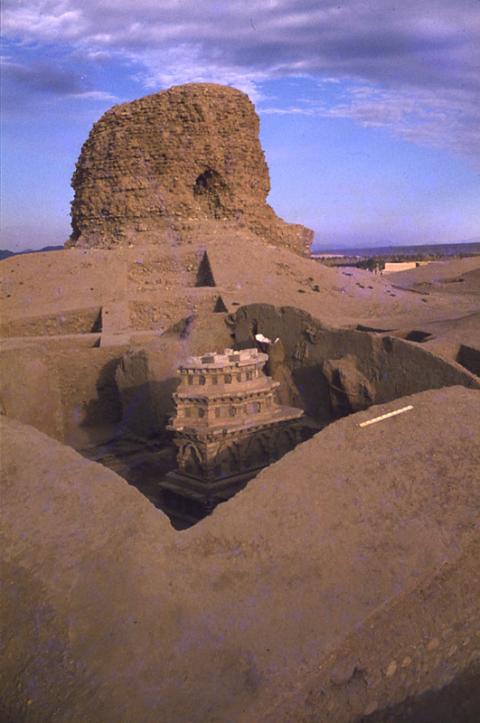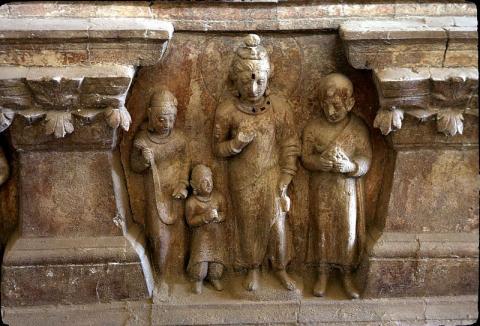A. Symbol (tamga) of the Alkhan
B. The monumental stupa of Shah-ji-ki-Dheri is one of the most important among Buddhist temple complexes in Gandhara. The stupa, which was supposedly founded by the Kushan king Kanishka I (ca. 127/28–150/51), was famous among Chinese pilgrim-monks. However, today nothing remains visible. During the excavations of the Archaeological Department of India in 1911, sixteen Alkhan drachms were found wrapped in a cloth. Based on their style and technique of production, these coins of the early Alkhan type (compare Nos. 8, 9) displaying elongated skulls were struck at the same mint, which may have been located in neighboring Purushapura (Peshawar).
The Chinese monk Song Yun (showcase 9, Fig. C), who visited the temple in 520 CE, described it as follows: "All kind of Buddhist objects are kept inside the pagoda. Here there are objects decorated with gold and jewels in thousands of forms and of such variety that it would be no simple task to name them. At sunrise the gilded screens glow like fire, while the light morning breeze brings the precious manacles to chime. Of all the pagodas of the Western world this is the most important."
C. The Buddhist stupa of Tapa Kalan, Hadda (near Jalalabad in the Kabul River valley, Afghanistan) (5th/8th century CE). (©Zemaryalai Tarzi)
In the deposit of reliquaries found at the stupa of Tapa Kalan, dated to the 5th century, over two hundred Sasanian and Byzantine coins as well as fourteen Alkhan drachms, five of which were from Khingila, were found (compare Nr. 7 and showcase 7).
D. Tapa Shotor, Hadda. The base of the stupa with the image of a Bodhisattva Maitreya (the Buddha of the future) surrounded by devotees: to his left a monk with flowers; to his right a mother with child (4th/5th cenutry CE). (© Wien, WHAV)



